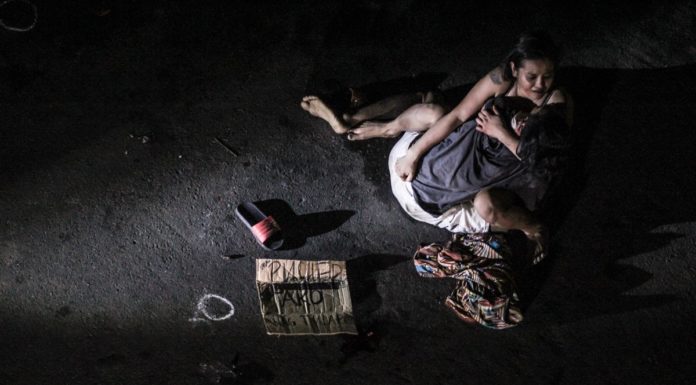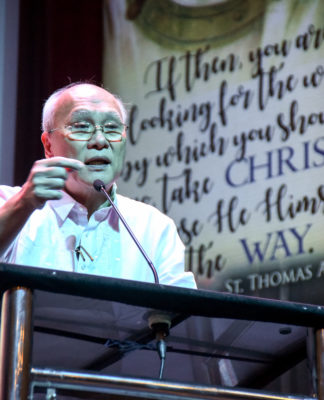 WAS JOSE Rizal a womanizer? A heretic? Was he mistreated in UST?
WAS JOSE Rizal a womanizer? A heretic? Was he mistreated in UST?
These are just some of the popular myths about the national hero, coming mainly from false accounts by history and misinformed fictionists. And these are the same popular myths that Augusto de Viana, chairman of the Department of History, seeks to debunk.
“Everything you hear revolves around the building up of the myth of Rizal,” De Viana said. “But he’s just an ordinary person who happened to have a drive to make the best out of his life.”
Misconceptions
So was Rizal a heretic? De Viana said perception was on his relationship with Josephine Bracken amid a conservative environment then.
“A priest’s homily attacked Rizal once, encouraging lay faithful to despise him because of qualms that he was a sinful man for living with a woman who was not his wife,” he said.
Despite criticisms from some church officials, Rizal did not actually confront the Catholic Church, according to him.
“He attended Masses regularly and was actually very religious,” he said. “He would even go to Mass even if the homily was against him.”
In the case of the national hero’s “serial womanizer” persona, his relationship with Eleanor Rivera, Eleanor Valenzuela, and Consuelo Ortiga were not necessarily romantic.
“It was already his sister, Trinidad, who said he was merely a favorite shopping companion among women,” De Viana said.
Another popular myth about Rizal and his family was that they were driven out of the country after being blacklisted by a secret group in Calamba, Laguna.
De Viana said it could not have been so because they were part of the principalia or the favored families in their hometown.
Marilou Diaz-Abaya’s film, Jose Rizal (1998) contained inaccurate information about the national hero, he said.
In the movie, Paciano told Rizal that he was going to continue studying Medicine in Europe because according to his father, a secret society had volunteered to pay for his education.
De Viana said that there was no proof behind this account. He said that the family could have financed the education because of their bountiful tracts of land in Los Baños, Laguna.
“Agriculture was very fruitful during that time. They didn’t need to send Rizal as a scholar because they could pay the full tuition by themselves,” he said.
Rizal as a Thomasian
Rizal’s supposedly acrimonious relationship with UST is another misconception pointed out by de Viana. He said the impression came from a false interpretation of a chapter in Rizal’s novel, El Filibusterismo, particularly the part where Placido Penitente walked out of class after being subdued by his Physics professor, Father Millon.
In the book Jose Rizal: Buhay, mga Ginawa at mga Sinulat ng isang Henyo, Manunulat, Siyentipiko at Pambansang Bayani, (All Nations Publishing Co., Inc., 1999), Gregorio and Sonia Zaide wrote how Rizal supposedly described in El Filibusterismo Dominican professors mocking and ridiculing Filipino students.
Fr. Fidel Villaroel, O.P. set the record straight in his book Rizal and the University of Santo Tomas (UST Press, 1984). He said that any occurrence stated in the novel could not be proven to be based on a historical event.
He pointed out that Rizal was not racially discriminated by the Spanish friars during his stay at the University.
“He was able take his first year in Medicine and his preparatory course to Medicine at the same time,” said De Viana. “He was actually favored by the Spaniards, or else he would not have been able to do that.”
He added that Rizal graduated without failures and with the following notable grades: one “Pass,” eight “Good,” six “Very good” and six “Excellent.”
As Rizal left the University to continue studying in Europe, different interpretations of its causes and implications spread.
One of them could be seen in the book La Masonizacion de Filipinas (1897) by Pablo Pastells, which states that Rizal left to study in Europe because of an argument with a professor.
This was further elaborated in Lineage, Life and Labors of Jose Rizal (1913) by Craig Austin. He stated that Rizal’s frustration and departure from the Philippines was drawn from a priest-professor, who expressed ideas contrary to those in a book they were using in class. Because of this, Rizal thought he was just wasting his time studying at the University.
In light of these misconceptions, Villaroel argued that such myths were based more on the mistaken interpretations of the fictional El Filibusterismo than actual historical events.
Erroneous books
Much of the false accounts about Rizal can be traced to erroneous history books.
De Viana said that some of them deliberately sensationalized content for the sake of profit.
“Some books tend to mislead to show history in another perspective,” he said, citing a book suggesting that Rizal was an icon to notorious figures like Mao Zedong and Adolf Hitler.
“It would be interesting if that was true. But if you make a time line, you would see that it was impossible,” he explained.
De Viana noted that although Rizal was in China during the birth year of Mao Zedong, he was far from his birth place. He said Hitler’s birth also did not take place while Rizal was in Europe.
Given the false notions about Rizal, De Viana encouraged students to be more critical in reading about him to be able to distinguish between fact and fiction.
“You have to base it on evidence,” he said. “History should be a service to man, but if we propagate myths rather than actual occurrences, then it becomes more of a disservice.”
















